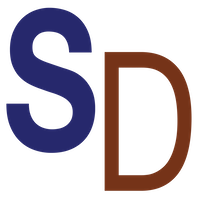
In a new study, a group of researchers, led by Dr. Joshua Goldberg from the Hebrew University, describe a new kind of neurochemical wave in the brain. Their research, published in Nature Communications, unveils the existence of traveling waves of the neurochemical acetylcholine in the striatum, a region of the brain responsible for motivating actions and habitual behaviors.
The motivation to execute an action is widely thought to depend on the release of the another neurochemical, dopamine, in the striatum. Recent research has shown that dopamine is released in wave-like patterns within the striatum. The team led by Goldberg discovered that acetylcholine is also released in the striatum in wave-like patterns. It has long been thought that in order for the striatum to function properly a balance needs to be maintained between dopamine and acetylcholine release in the striatum, and that the disruption of this balance leads to movement disorders such as Parkinson’s disease. The new study proposes a mathematical mechanism by which simultaneous waves of acetylcholine and dopamine arise, which may represent how this balance is realized.
The research was conducted using state-of-the-art genetic tools and advanced imaging techniques, allowing the team to visualize the acetylcholine waves in awake, behaving animals. Additionally, imaging techniques were employed to observe the interaction between acetylcholine and dopamine in vitro. Through a rigorous mathematical analysis, using reaction-diffusion activator-inhibitor models and computer simulations, the team proposed a model that explains the formation of both acetylcholine (the activator) and dopamine (the inhibitor) traveling waves.
Key Highlights of the Study:
First description of acetylcholine waves: in the striatum of healthy behaving animals.
Local Dopamine Release is Triggered by individual non-dopamine neurons: The study demonstrated that electrical activation of a single acetylcholine-releasing neuron in the striatum is sufficient to induce local dopamine release in its proximity.
A novel model for how the two neurochemical waves arise simultaneously: The study proposes a novel mathematical model based on the known interaction between acetylcholine and dopamine in the striatum, that can give rise to the simultaneous generation of these waves.
Finally, the study provides strong testable predictions about the relationship between these two wave phenomena and the neural mechanism for their formation. The study also proposes that dopamine and acetylcholine axons (which are the very long appendages of the dopamine and acetylcholine neurons) interact directly and locally in the striatum, which is not how neurons are traditionally thought to interact.

